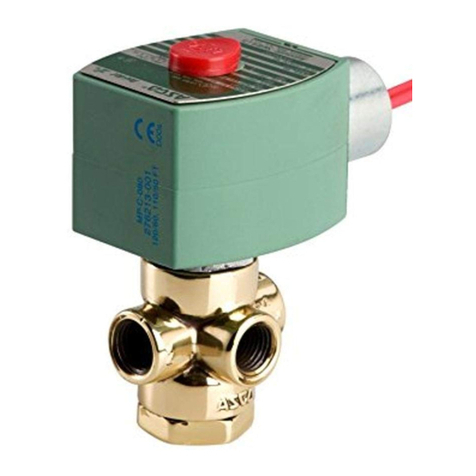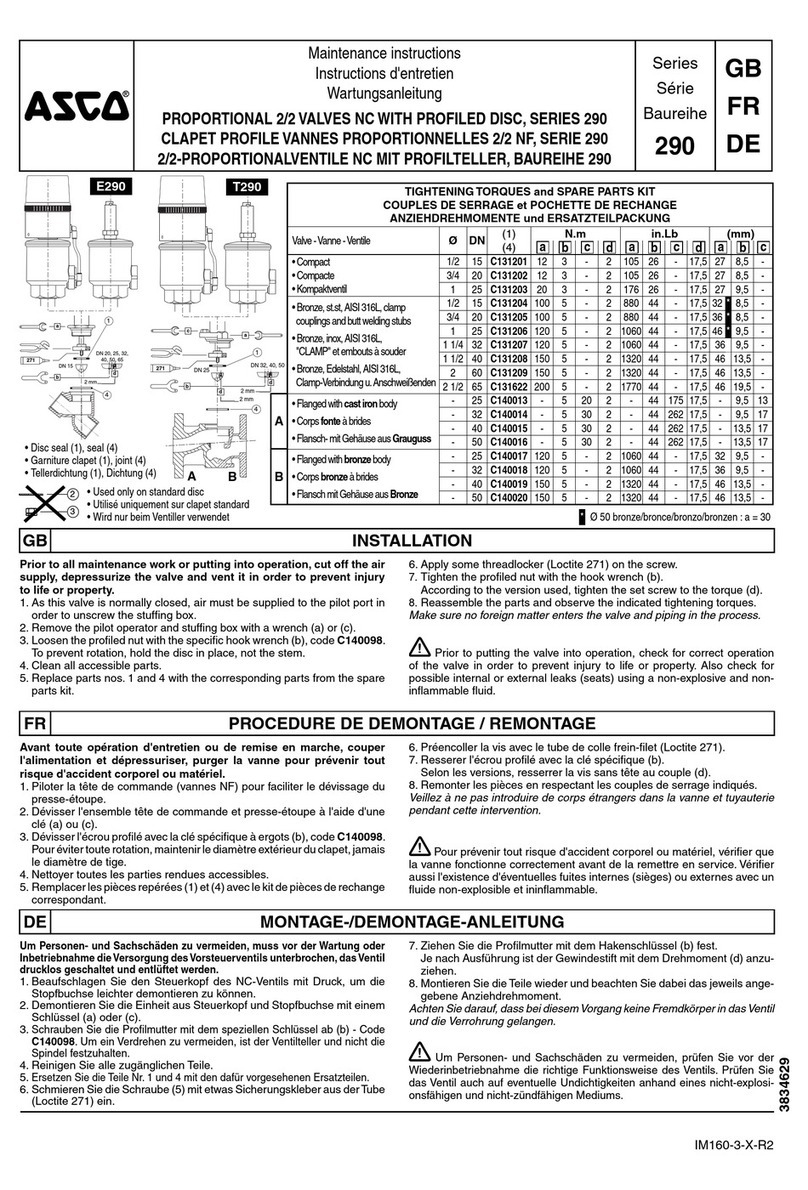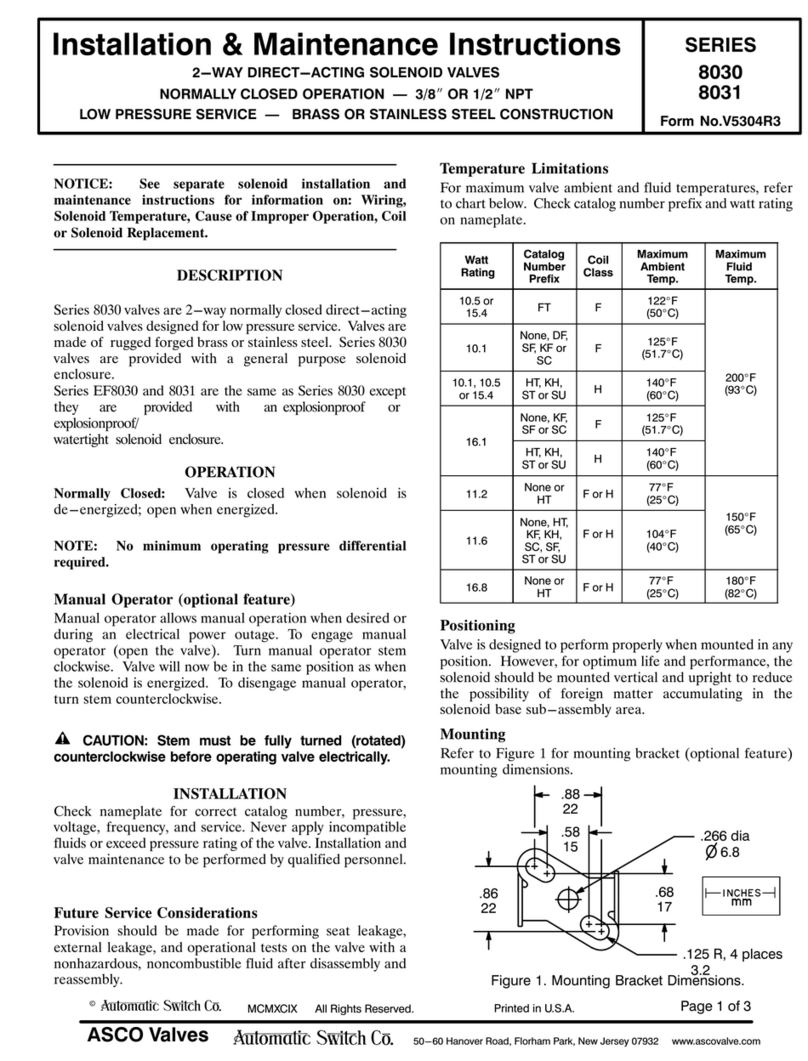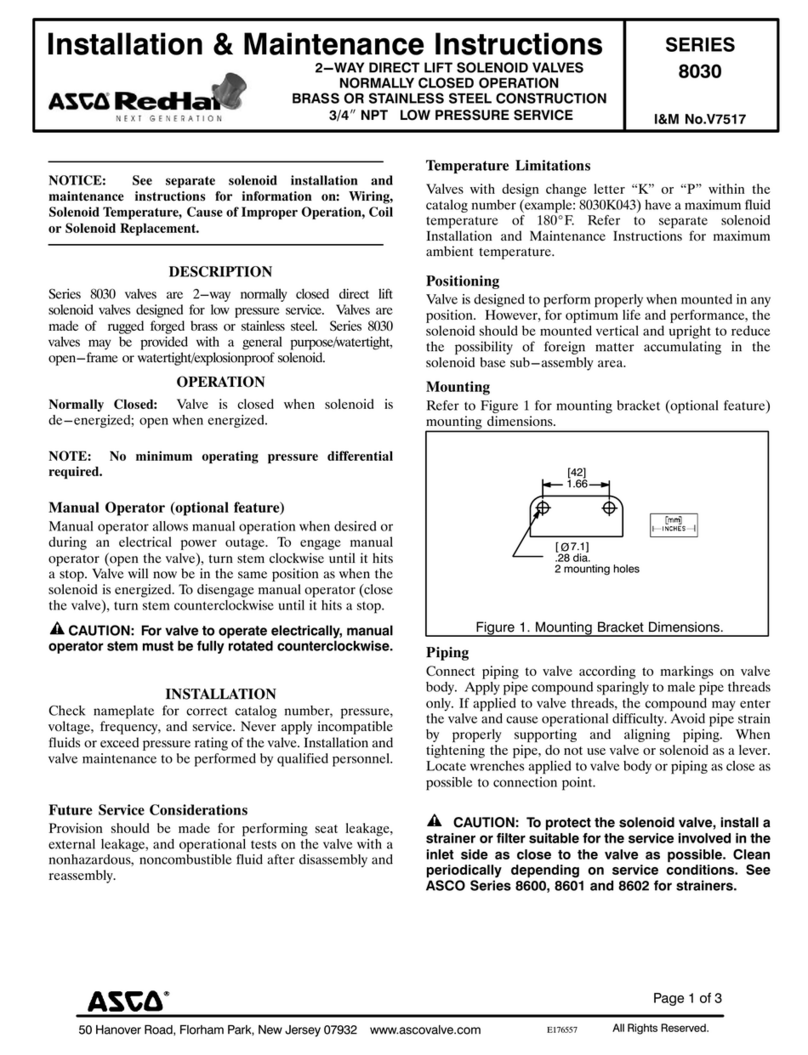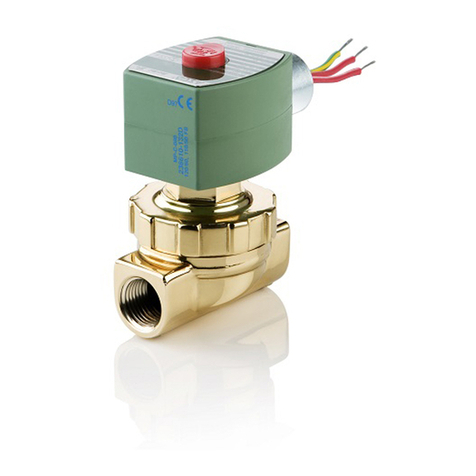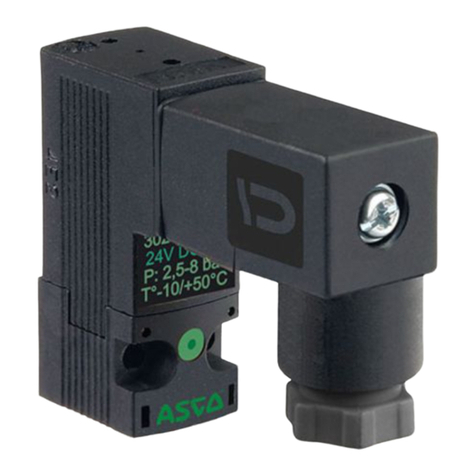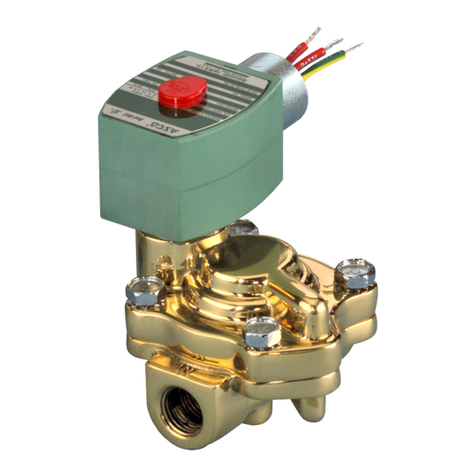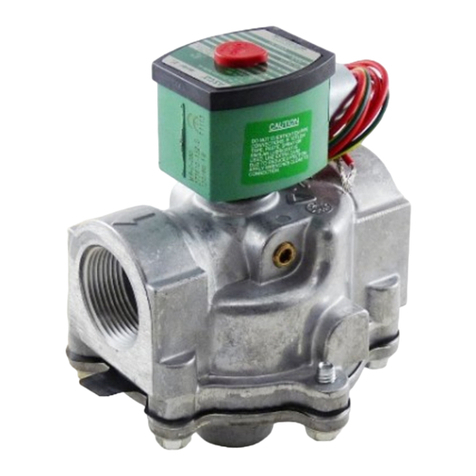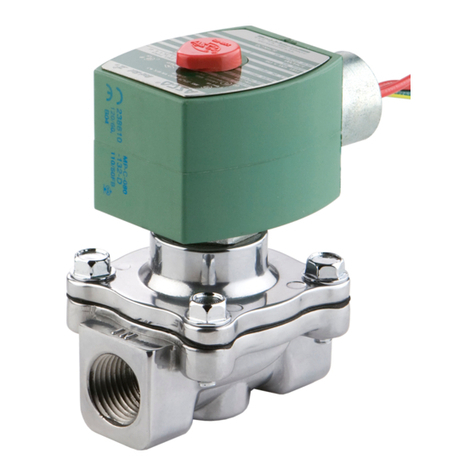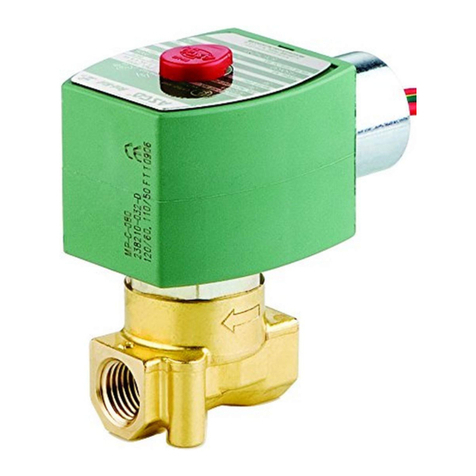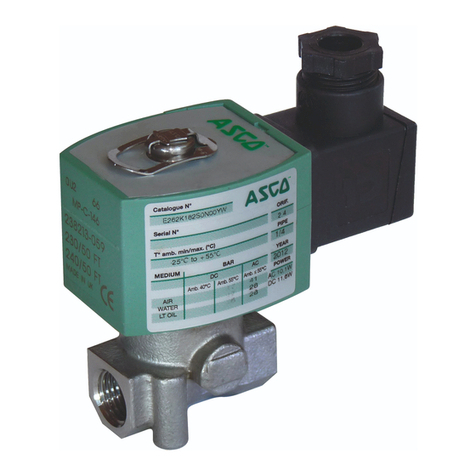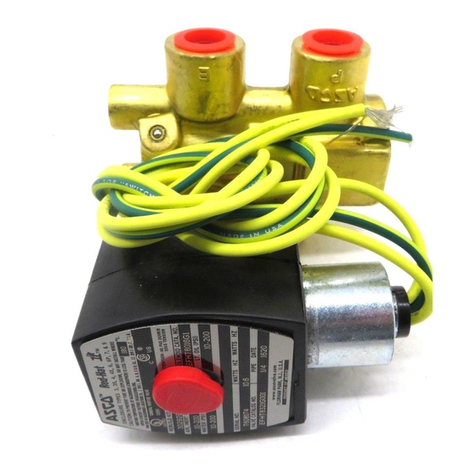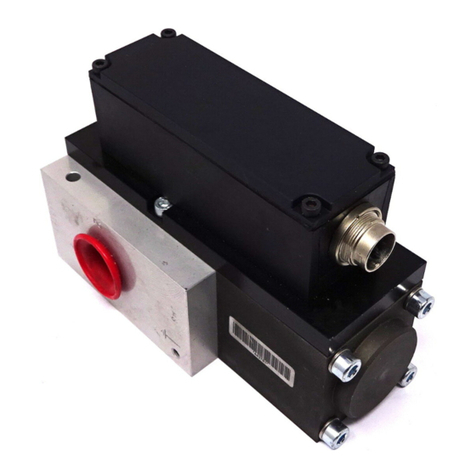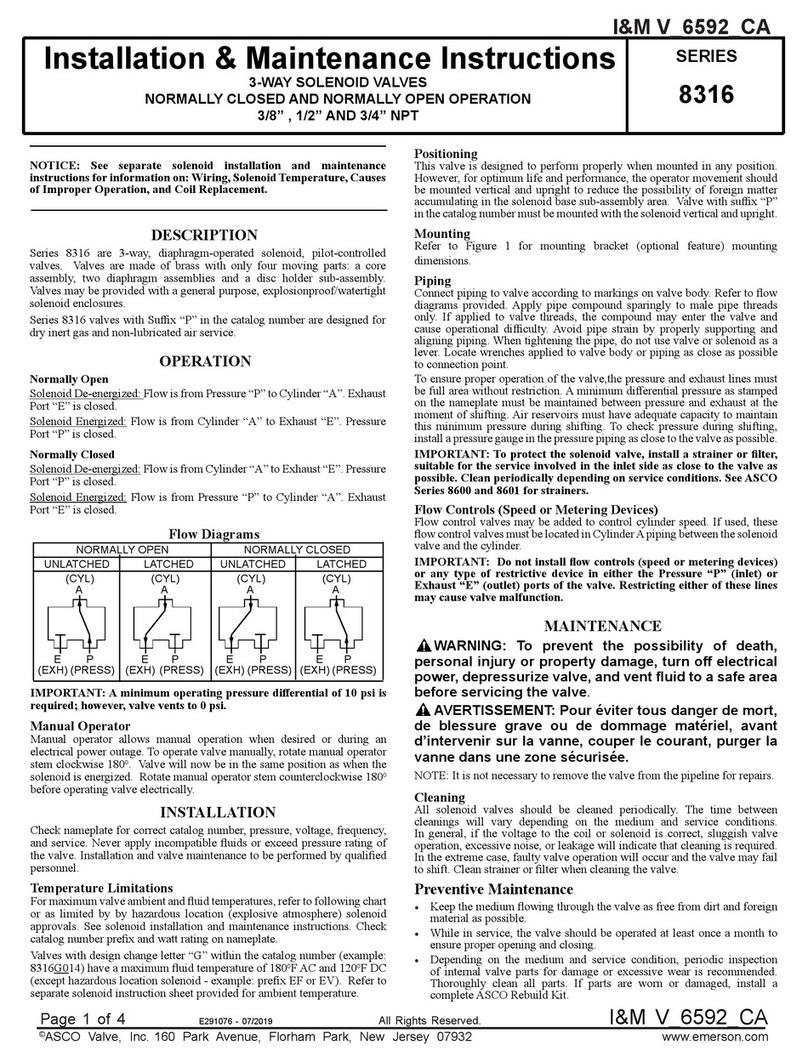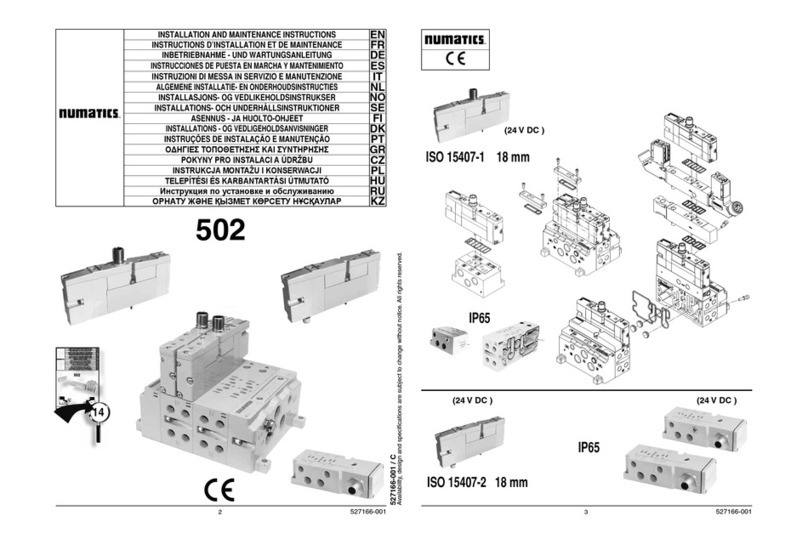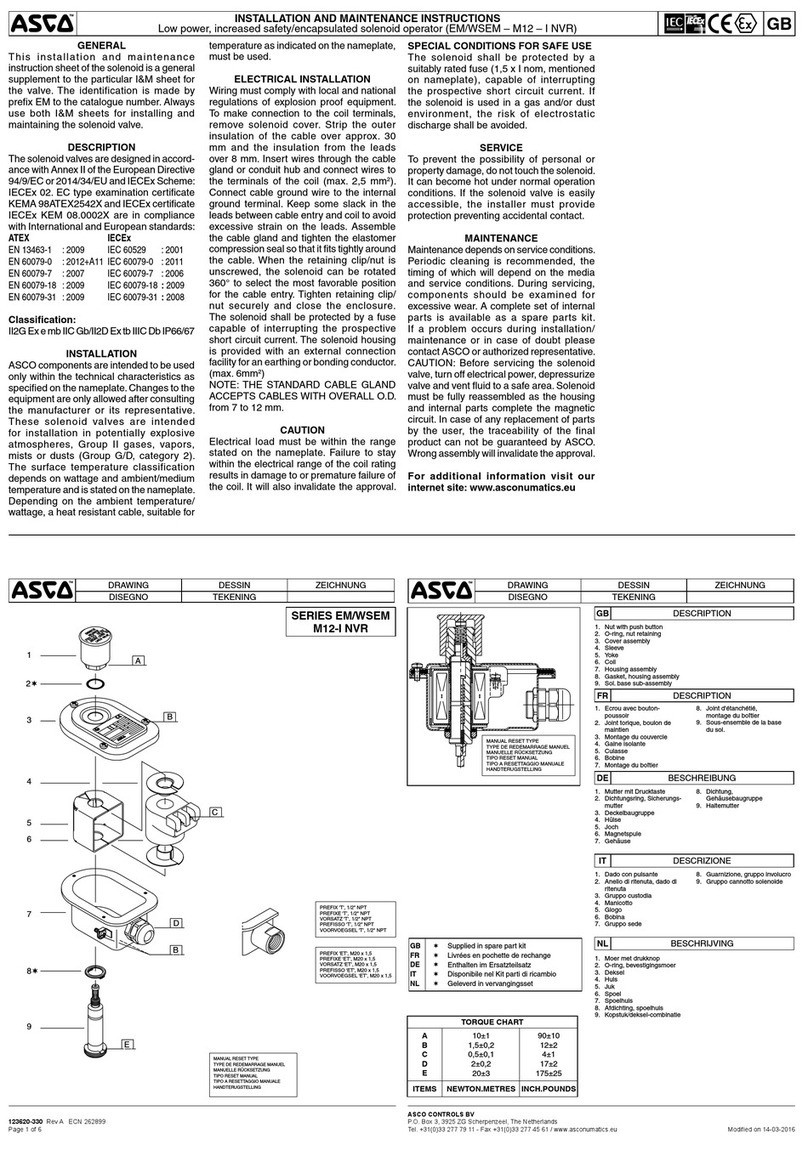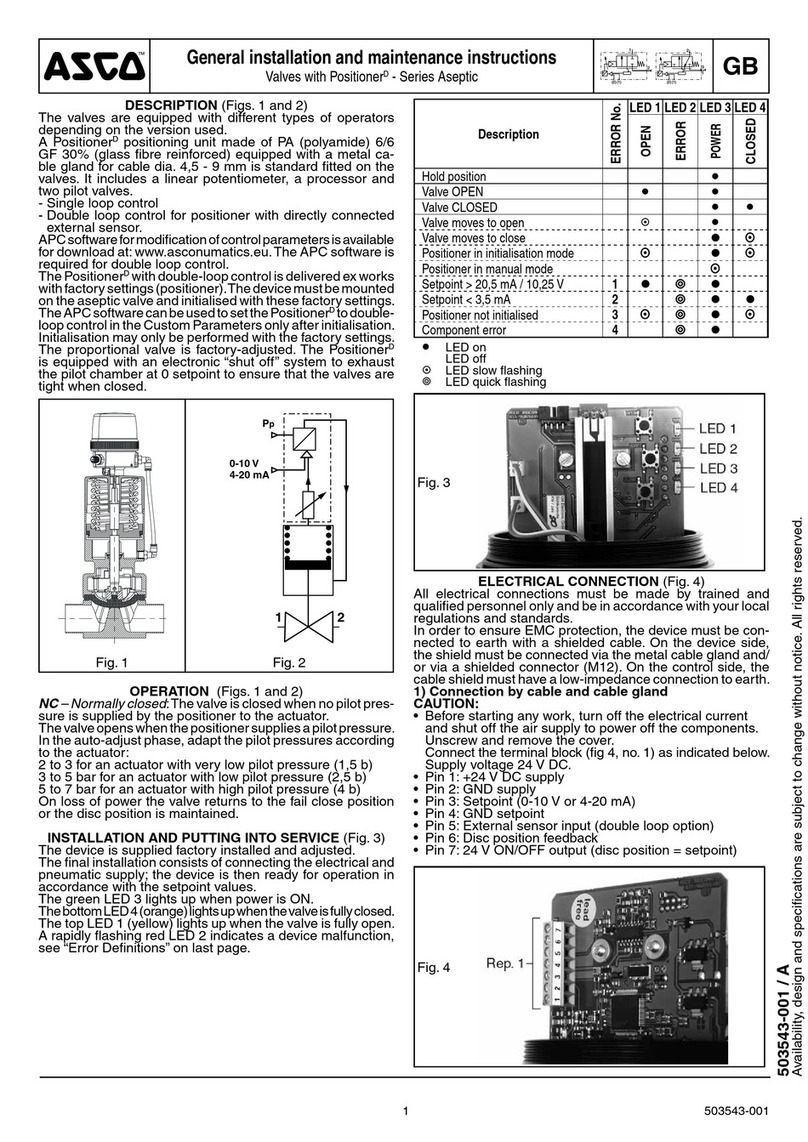
Page 1 of 2
50-60 Hanover Road, Florham Park, New Jersey 07 32
ASCO Valves
MCMXCIII All Rights Reserved. Printed in U.S.A.
Installation & Maintenance Instructions SERIES
Form No.V6860R1
-WAY DIRECT-ACTING QUICK EXHAUST SOLENOID VALVES 8 17
UNIVERSAL OPERATION - BRASS OR STAINLESS STEEL CONSTRUCTION
1/4 NPT - AIR OR INERT GAS SERVICE
IMPORTANT: See separate solenoid installation and maintenance
instructions for information on: Wiring, Solenoid Temperature,
Causes of Improper Operation, Coil, or Solenoid Replacement.
ESCRIPTION
Series 8317 valves are 3-way direct-acting with quick exhaust
solenoid valves designed for air or inert gas service. Valve bodies are
ade of rugged brass or stainless steel. The valves ay be provided
with a low power or intrinsically safe solenoid.
OPERATION
Universal Pressure at 2 (Normally Closed Operation)
Solenoid e-energized: Pressure at 2 is closed, flow is fro cylinder
1 to ain exhaust 4. Pilot exhaust 3 is open.
Solenoid Energized: Flow is fro pressure 2 to cylinder 1. Main
exhaust 4 and pilot exhaust 3 are closed.
Universal Pressure at 3 (Normally Open Operation)
Solenoid e-energized: Flow is is fro pressure 3 cylinder 1. Main
exhaust 4 and pilot exhaust 2 are closed.
Solenoid Energized: Pressure at 3 is closed, flow is fro cylinder 1 to
ain exhaust 4. Pilot exhaust 2 is open.
Note: This construction is interchangeable fro Pressure at 2 to
Pressure at 3 (or vice versa) by changing the piping.
IMPORTANT: Minimum operating pressure differential 5 psi.
Flow iagrams
Universal - Pressure at 2
De-energized
Universal - Pressure at 3
Energized
De-energized
Energized
12
3
4
3
33
1
11
2
22
4
44
Main
Exh. Pilot
Exh.
INSTALLATION
Check na eplate for correct catalog nu ber, pressure, voltage,
frequency, and service. Never apply inco patible fluids or exceed
pressure rating of the valve. Installation and valve aintenance to be
perfor ed by qualified personnel.
Temperature Limitations
Fluid and a bient te perature range: -4 F to +140F.
Future Service Considerations
Provision should be ade for perfor ing seat leakage, external
leakage, and operational tests on the valve with a nonhazardous,
nonco bustible fluid after disasse bly and reasse bly.
Positioning Valve ay be ounted in any position.
Mounting For ounting valve body refer to Figure 1.
.750
1
1.500
38
.200
5
Figure 1. Dimensions for mounting valve body.
Piping
There are two exhaust flows in the exhaust ode. The pilot exhaust
ay be connected to the ain exhaust if the air or inert gas cannot be
exhausted directly to the at osphere. For universal valves with
pressure at 2 (nor ally closed operation) the pilot exhaust is at 3 and
ay be connected to ain exhaust 4. For universal valves with
pressure at 3 (nor ally open operation) the pilot exhaust is at 2 and
ay be connected to ain exhaust 4. Connect piping or tubing to
valve according to arkings on valve body. Refer to flow diagra s in
OPERATION section.
CAUTION: To avoid damage or accidental disengagement of
cartridge assembly from valve body, hold cartridge assembly
securely by wrenching flats when installing or removing piping at
Port 3.
Apply pipe co pound sparingly to ale pipe threads only. If applied
to valve threads, the co pound ay enter the valve and cause
operational difficulty. Avoid pipe strain by properly supporting and
aligning piping. When tightening the pipe, do not use valve or
solenoid as a lever. Locate wrenches applied to valve body or piping
as close as possible to connection point.
To insure proper operation of the valve, the pressure and exhaust lines
ust be full area without restriction. A ini u differential
pressure (5 psi), as sta ped on the na eplate, ust be aintained
between pressure and exhaust at the o ent of shifting. Air
reservoirs ust have adequate capacity to aintain this ini u
pressure during shifting. To check pressure during shifting, install a
pressure gauge in the pressure piping as close to the valve as possible.
IMPORTANT: These solenoid valves are intended for use on clean
dry air or inert gas, filtered to 50 micrometres or better. The dew
point of the media should be at least 10 C (18 F) below the
minimum temperature to which any portion of the clean air/inert
gas system could be exposed to prevent freezing. If lubricated air is
used, the lubricants must be compatible with Buna N elastomers.
iester oils may cause operational problems. Instrument air in
compliance with ANSI/ISA Standard S7.3-1975 (R1981) exceeds
the above requirements and is, therefore, an acceptable media for
these valves.
